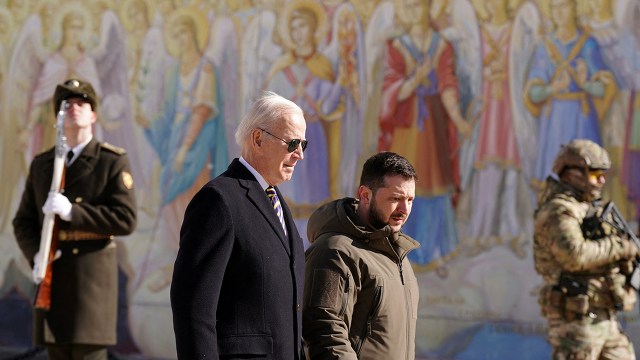
Russia launched its military invasion of Ukraine a year ago this month. Ahead of the Feb. 24 anniversary of the start of the war, here’s a look back at public opinion findings about the conflict, based on Pew Research Center surveys conducted internationally and in the United States.
Pew Research Center published this collection of survey findings to coincide with the first anniversary of Russia’s military invasion of Ukraine on Feb. 24, 2023. All findings are based on previously published surveys from the Center. Additional information about the original surveys, including their field dates, sample sizes and methodologies, can be found by following the links in the text of this analysis.
International public opinion of President Vladimir Putin and Russia turned much more negative following Russia’s invasion of Ukraine. Attitudes about Putin and Russia were already negative in many countries before the war in Ukraine. But in spring 2022, shortly after the invasion, a median of 90% of adults across 18 surveyed countries said they had no confidence in Russia’s president to do the right thing regarding world affairs, while a median of just 9% had confidence in him. Ratings for Putin reached record lows in every nation with available trend data.
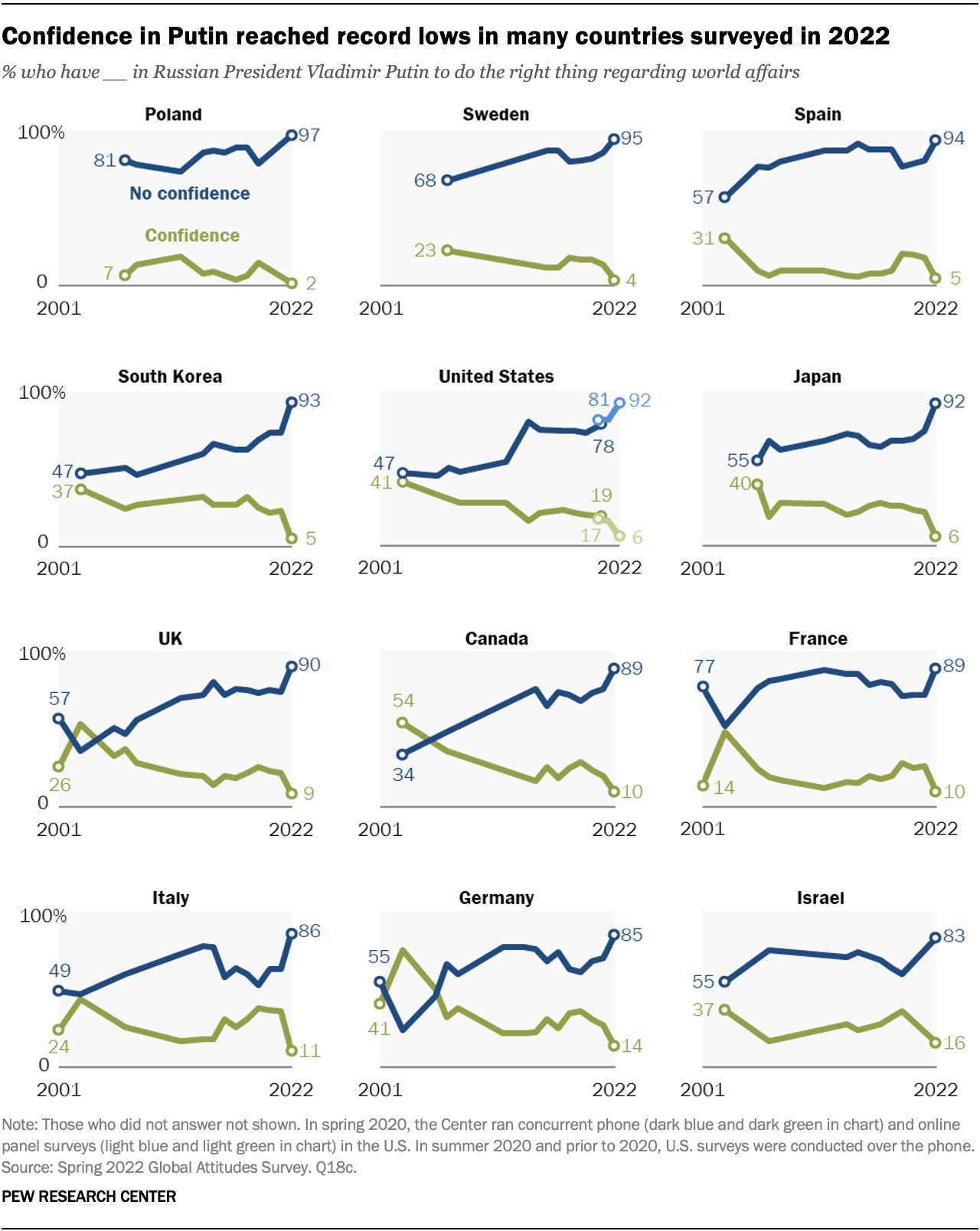
Views of Russia itself were broadly negative, too. A median of 85% of adults across the surveyed countries expressed an unfavorable opinion of Russia in spring 2022. In nearly every country with available trend data, there was a double-digit decline in favorable ratings of Russia since 2020, the last time the question was asked.
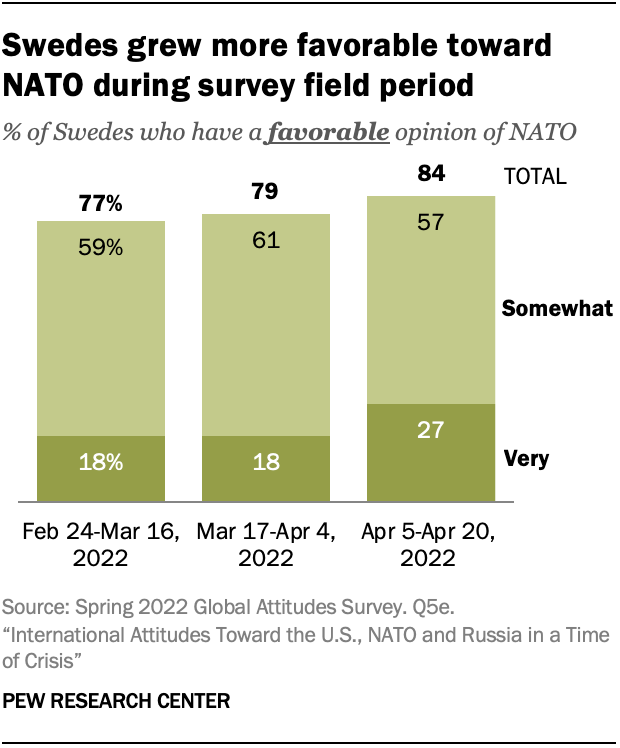
International opinions of NATO turned more positive in several countries after the war began. In Germany, for instance, 70% of adults expressed a favorable opinion of NATO in spring 2022, up from 59% the year before. In the United Kingdom, 74% of adults had a positive view of the alliance, up from 66% in 2021.
In one non-NATO member country surveyed – Sweden – views of the alliance became more positive even during the survey field period itself, which coincided with the beginning of the war in Ukraine. Among Swedes surveyed April 5-20, 2022, nearly two months into the war, 27% expressed a very favorable opinion of NATO, up from 18% among Swedes who were surveyed a few weeks earlier.
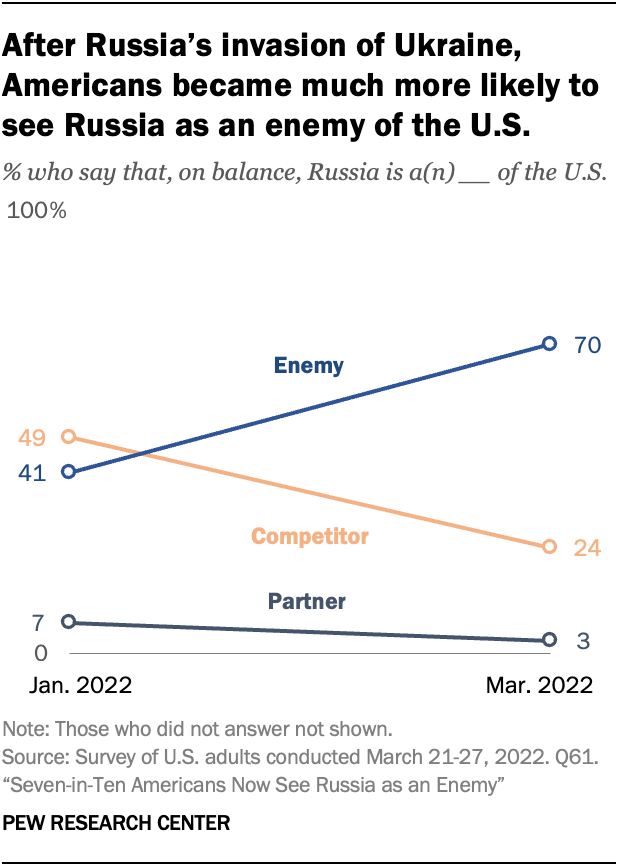
After Russia invaded Ukraine, there was a sharp increase in the share of U.S. adults viewing Russia as an enemy of the United States. In January 2022, with Russian troops massing near the border but not yet crossing into Ukraine, Americans were slightly more likely to see Russia as a competitor of the U.S. than as an enemy (49% vs. 41%). By March 2022, after Russia’s invasion, the tables had turned: Seven-in-ten Americans saw Russia as an enemy, while 24% saw it as a competitor. In both surveys, very few adults perceived Russia as a partner of the U.S. (7% in January 2022, 3% in March 2022).
There has also been a steep rise in the share of Americans with a very unfavorable view of Russia in recent years. Around seven-in-ten U.S. adults (69%) expressed a very unfavorable view of Russia in March 2022, up from 41% in 2020. Two-thirds of Republicans and Republican-leaning independents had a very unfavorable view in March, up from around a third (32%) two years earlier. And 72% of Democrats and Democratic leaners had a very unfavorable opinion, up from 49% in 2020.

In a survey conducted around a month after the invasion, 72% of Americans said they had at least some confidence in Ukrainian President Volodymyr Zelenskyy to do the right thing in world affairs, while just 6% said the same about Putin. Zelenskyy (also spelled Zelensky) inspired confidence from a greater share of the American public than any of the six leaders asked about in the March 2022 survey, including U.S. President Joe Biden. Among the Americans who expressed at least some confidence in Zelenskyy, one-in-three said they had a lot of confidence in him, also far exceeding the shares who said so about the other leaders included in the survey. As for Putin, 92% of Americans said they lacked confidence in him, including 77% who said they had no confidence at all in the Russian president.
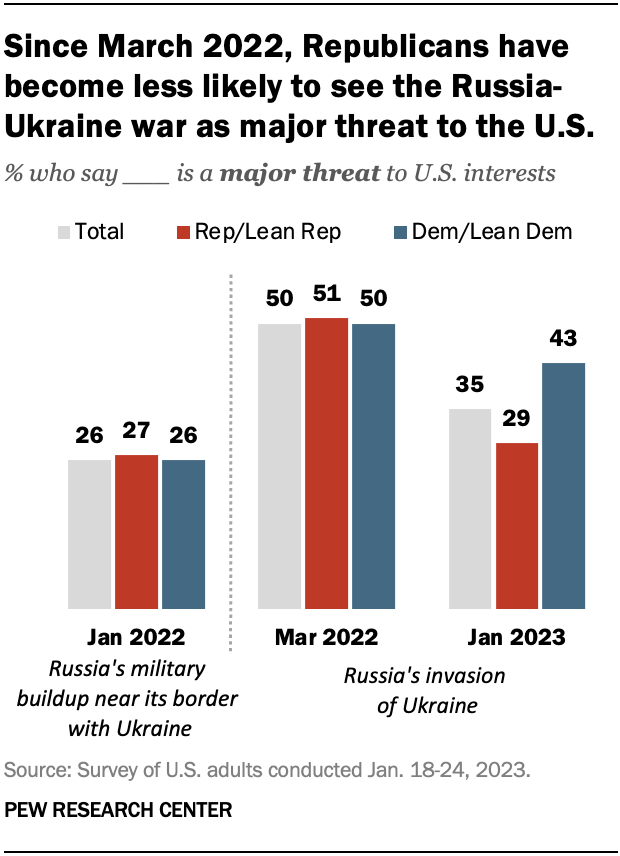
Between March 2022 and January 2023, there was a decline in the share of Americans – especially Republicans – viewing the war as a major threat to U.S. interests. In March 2022, half of U.S. adults, including nearly identical shares of Republicans and Democrats, saw Russia’s invasion of Ukraine as a major threat to American interests. By this past January, that figure had declined to 35% among Americans overall. While there was a decline in both parties, the decrease among Republicans was steeper: The share of Republicans who perceived the invasion as a major threat to the U.S. fell from 51% around the start of the war to 29% in January 2023.
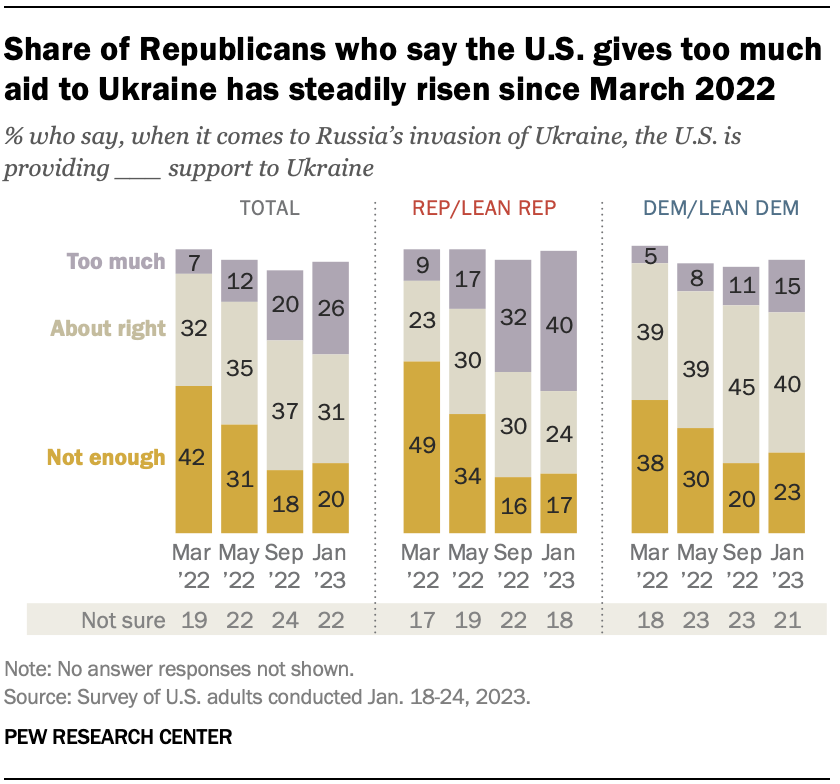
Four-in-ten Republicans in the U.S. said in January 2023 that the country is providing too much aid to Ukraine, up from 9% who said so early in the war. As Republicans have become less likely to see the war as a major threat to the U.S., they have become more likely to say the U.S. is providing too much support to Ukraine. The share of Republicans expressing this view increased from 9% in March 2022 to 17% in May 2022 to 32% in September 2022 to 40% in January 2023. As of January, Americans overall were divided in their views of U.S. assistance to Ukraine: 26% said the U.S. was providing too much support, 31% said it was providing the right amount and 20% said it was providing too little support.
As of January 2023, Americans were more likely to approve than disapprove of the Biden administration’s response to Russia’s invasion of Ukraine, but attitudes varied widely by party. Among U.S. adults overall, 43% strongly or somewhat approved of the administration’s response to the invasion, while 34% strongly or somewhat disapproved. Around one-in-five adults (22%) were not sure.
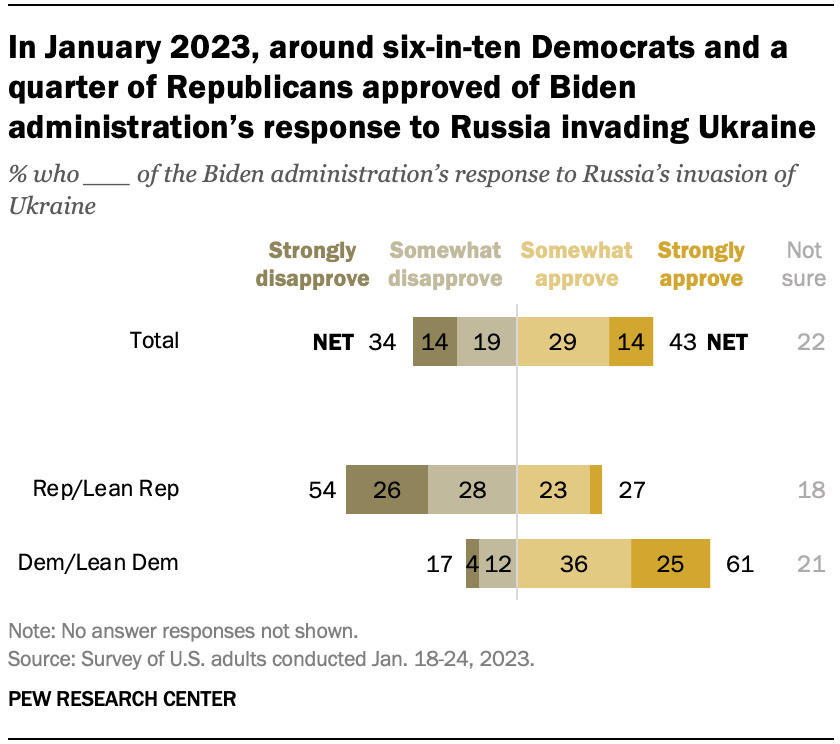
A 61% majority of Democrats approved of the administration’s response to the invasion but more than half of Republicans (54%) disapproved of it. Still, around a quarter of Republicans (27%) had a positive view of the Biden administration’s response – notably greater than the share who approved of the overall way Biden was handling his job as president at the time (6%).



